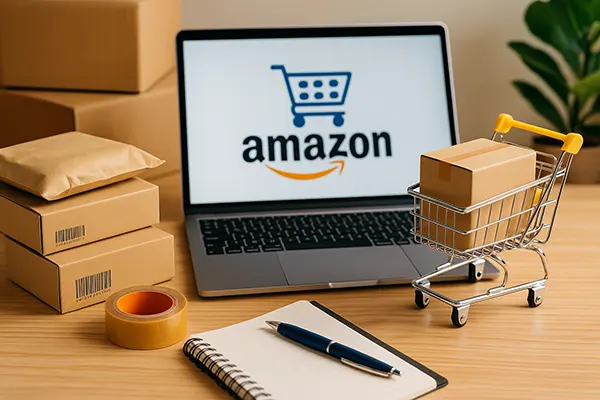
How to Earn on Amazon FBA for Beginners Without Initial Capital
Starting a business on Amazon FBA (Fulfilment by Amazon) without initial capital may seem challenging, but with a strategic approach, it is achievable. By leveraging low-cost methods, building supplier relationships, and using Amazon’s infrastructure effectively, beginners can enter the e-commerce space with minimal risk. This guide explains practical, real-world steps that are relevant in 2025, focusing on realistic strategies, current market trends, and cost-saving techniques.
Understanding the Basics of Amazon FBA Without Capital
Amazon FBA allows sellers to store their products in Amazon’s fulfilment centres, where the company handles packaging, shipping, and customer service. While many believe that significant upfront investment is required, there are ways to minimise costs, such as using dropshipping or wholesale partnerships that offer payment after sales are made. These approaches help avoid large inventory purchases.
In 2025, Amazon’s seller ecosystem offers tools and support for new entrepreneurs, including starter programmes and educational resources. Sellers can use Amazon Seller University to understand product listing, marketing, and operational optimisation without hiring external consultants.
Another growing trend is using print-on-demand services integrated with Amazon FBA. This method allows sellers to design products like apparel, mugs, or stationery and sell them without keeping physical stock. Orders are produced and shipped directly to customers, meaning no large upfront investment is necessary.
Identifying Profitable Niches With Minimal Costs
Choosing the right niche is crucial for reducing startup expenses. In 2025, trending low-cost categories include lightweight home accessories, digital planners, and eco-friendly lifestyle products. These items often have low production costs, high perceived value, and affordable shipping rates.
Market research tools such as Helium 10, Jungle Scout, and Amazon’s own Best Sellers lists can help identify niches with consistent demand and low competition. This ensures that you invest time in products with real market potential rather than relying on guesswork.
It is also worth considering seasonal and event-based products that can be quickly sourced or created on demand. These require less capital and can generate sales spikes during specific periods, providing a cash flow boost without major upfront spending.
Funding Strategies and Resource Management
For those starting without personal capital, one viable option is using Amazon’s micro-loan programmes, which provide small amounts of funding to proven sellers. In 2025, these loans are available in several countries, offering flexible repayment terms tied directly to sales revenue.
Another option is to negotiate supplier credit terms, where payment is made after goods are sold. This approach is common in wholesale relationships and can eliminate the need for immediate capital. It requires building trust with suppliers through clear communication and reliability.
Additionally, crowdfunding platforms such as Kickstarter or Indiegogo can help secure funds for a product idea before production begins. This allows entrepreneurs to validate demand, collect pre-orders, and use the funds to fulfil orders without personal investment.
Optimising Operations for Cost Efficiency
Keeping operational costs low is key to maintaining profitability without significant starting capital. This includes using Amazon’s free marketing tools, such as A+ Content and Brand Story features, to boost conversions without expensive advertising campaigns.
Packaging optimisation is another cost-saving method. By choosing standardised sizes and lightweight materials, sellers can reduce storage and shipping fees. Amazon’s FBA calculator helps estimate costs before committing to product listings.
Leveraging remote freelancers for tasks like product photography, keyword research, and listing optimisation can also save money. Platforms such as Fiverr and Upwork offer affordable expertise that allows sellers to maintain quality without hiring full-time staff.

Building Long-Term Growth Without Financial Risk
Once initial sales are established, reinvesting profits into expanding product ranges is the most sustainable way to grow without taking on debt. Gradually increasing inventory diversity allows sellers to reach more customers while minimising risk.
Brand building is also critical for long-term success. In 2025, customers increasingly prefer sellers with a clear brand identity, transparent sourcing, and consistent quality. This can be achieved through storytelling, professional packaging, and maintaining excellent customer service.
Finally, expanding to other Amazon marketplaces internationally can increase revenue potential. Using Amazon’s Global Selling programme allows sellers to reach customers in different countries without managing separate logistics networks.
Staying Competitive in 2025
To remain competitive without significant investment, sellers must adapt quickly to market changes. This involves tracking trends, responding to customer feedback, and continuously optimising product listings for visibility.
Using data analytics is essential. Amazon provides detailed insights into sales, traffic, and customer behaviour, which can guide inventory decisions and marketing strategies. This reduces wasted effort and ensures resources are used effectively.
Networking with other sellers through forums, webinars, and trade events can also provide valuable insights and collaboration opportunities. Sharing experiences and strategies can help avoid costly mistakes and identify new opportunities.
